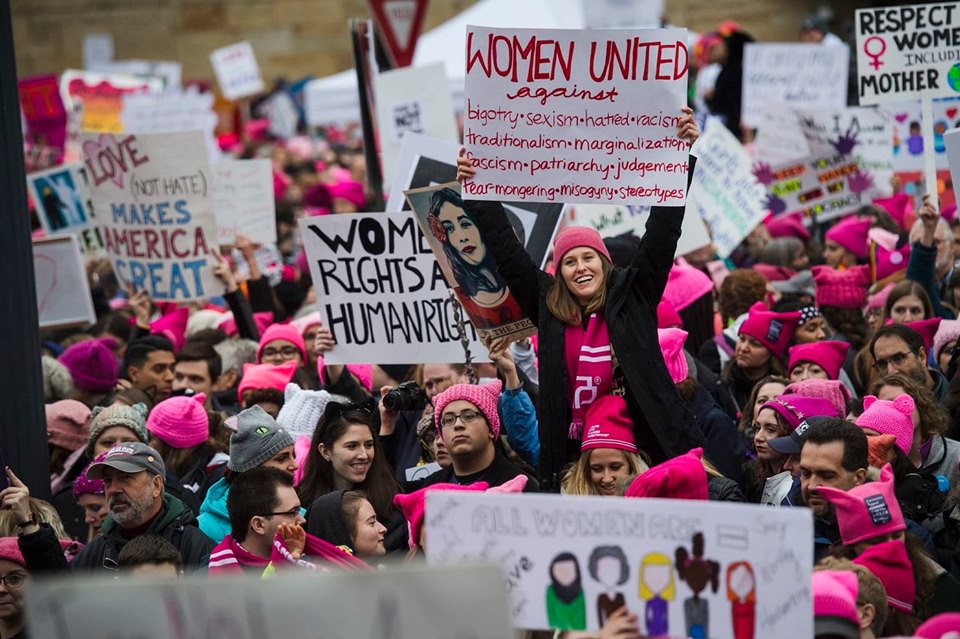
The social position of women and the proposed resolution to their historic inequality is called the woman question by the Marxist movement. The role of women in society, as is the case with all classes, exploited and oppressed groups, is first and foremost an expression of inequality rooted in private property relations.
Before the rise of private property, women played a leading position in the development of the family and social life. This form of society is referred to as matriarchal.
There was a spontaneous natural division of labor, based on biology — sex and age – that is, between men and women, between adults, children and older people. The social division of labor replaced the natural division of labor. With the slow incremental development of the productive forces, the social division of labor was stabilized with specialization of men in spheres of hunting and eventually cattle breeding, activity outside the home, and women in the sphere of gathering foodstuffs and maintenance of the home.
The origin of women’s inequality was in the rise of private property that cast women as the first exploited and oppressed group. With the development of productive forces, a social division of labor arose that assigned responsibility in production to the existing groups in society.
The dominance of primitive communal society based on the spontaneous natural division of labor was superseded with the advance of cattle breeding (pastoral economy) and a more developed agriculture, which in turn called forth new social relations based on a new social division of labor. The new division of labor made it possible to create and sustain a societal surplus of food. Tillers of the soil and breeders of cattle required products they did not produce within their own community, and this need was met with the development of exchange.
Over a long period of time, the roles and voices of men and women in social life shifted. The old form of society based on matriarchal structures gave way to a new form of patriarchal governing structures, which coincided with the rise of private property and classes.
The overthrow of mother-right was the world historical defeat of the female sex. The man took command in the home also; the woman was degraded and reduced to servitude, she became the slave of his lust and a mere instrument for the production of children. This degraded position of the woman, especially conspicuous among the Greeks of the heroic and still more of the classical age, has gradually been palliated and glossed over [justified], and sometimes clothed in a milder form; in no sense has it been abolished.
(F. Engels, Origin of Family, Private Property and the State, 1884.)
“In an old unpublished manuscript, written by Marx and myself in 1846, [The reference here is to the German Ideology, published after Engels’ death – Ed.] I find the words: “The first division of labor is that between man and woman for the propagation of children.” And today I can add: The first class opposition that appears in history coincides with the development of the antagonism between man and woman in monogamous marriage, and the first class oppression coincides with that of the female sex by the male.”
(F. Engels, Origin of Family, Private Property and the State, 1884.)
During the past century, a complex of social and political struggles and inventions destroyed much of the division of labor which had trapped women at the bottom of the social ladder and assigned them to home, kitchen, laundry, church, nursery, and had limited women’s participation in the artistic, literary, cultural, and political sphere.
The 1964 Civil Rights Act prohibited discrimination in employment, and also at this time the use of birth control became widespread. These two developments along with technological changes that eliminated the need for strength from most jobs allowed women to enter the workforce and begin the fight for equality on a higher level.
Women’s ability to escape their historically evolved social position of inferiority, in every society based on private property is bound up with and intertwined with the social division of labor. In the age of computers and robotics, which begins destruction of the social division of labor for the new world proletariat cast outside commodity production, the final emancipation of women begins with the worldwide overthrow of private property.
The overthrow of private property will change the old exploitative social relations and how our society thinks about and live out life, love, and intimate relations. The final emancipation of women is bound up with the overthrow of private property, destruction of the division of the social division of labor and destruction of the ability of any section of society to appropriate the unpaid labor of anyone.